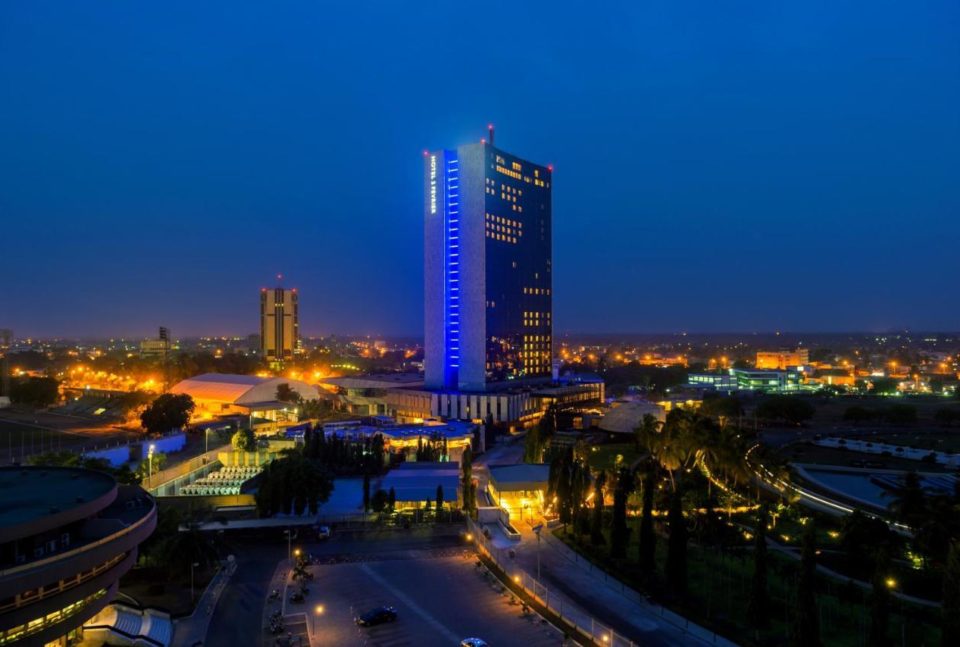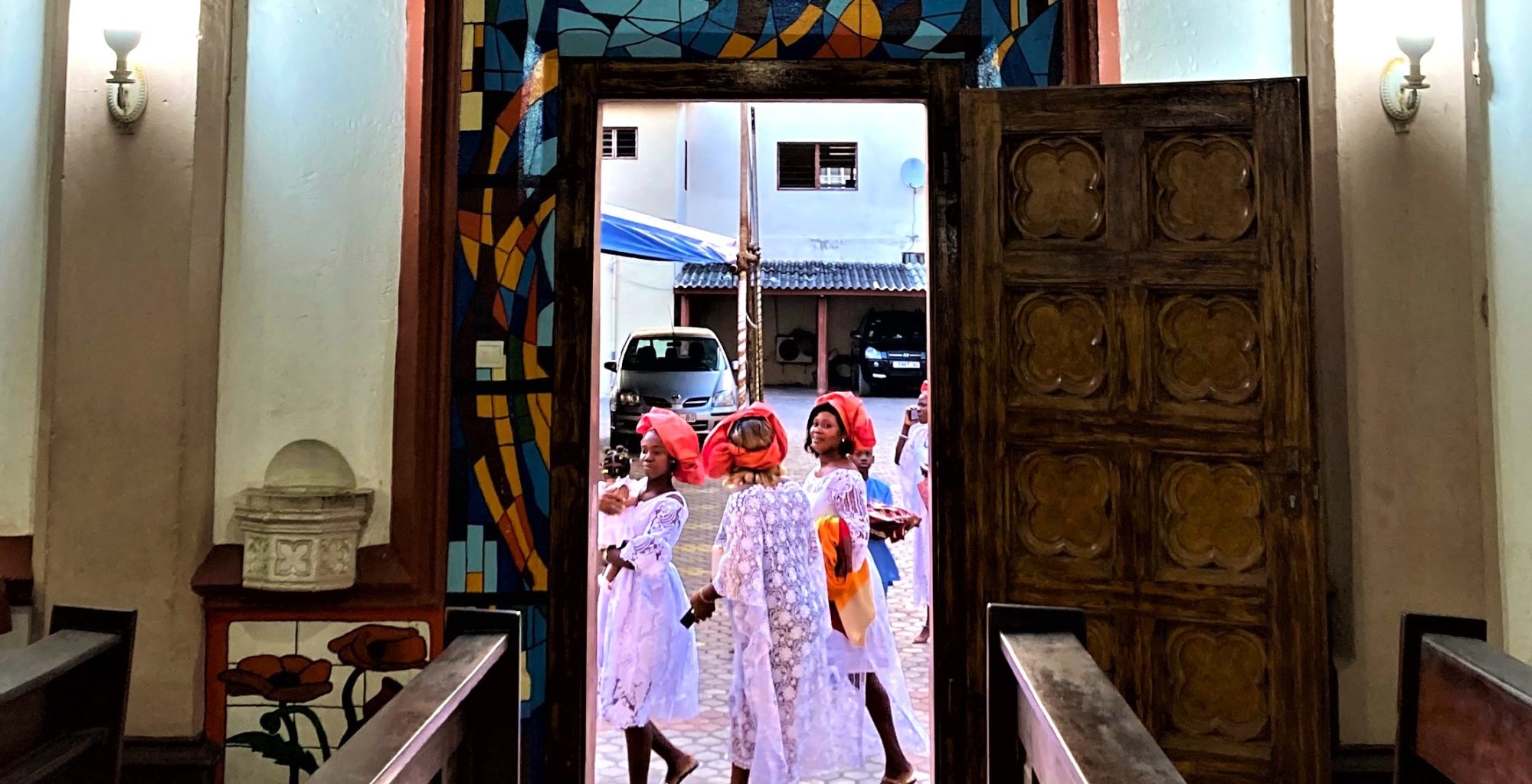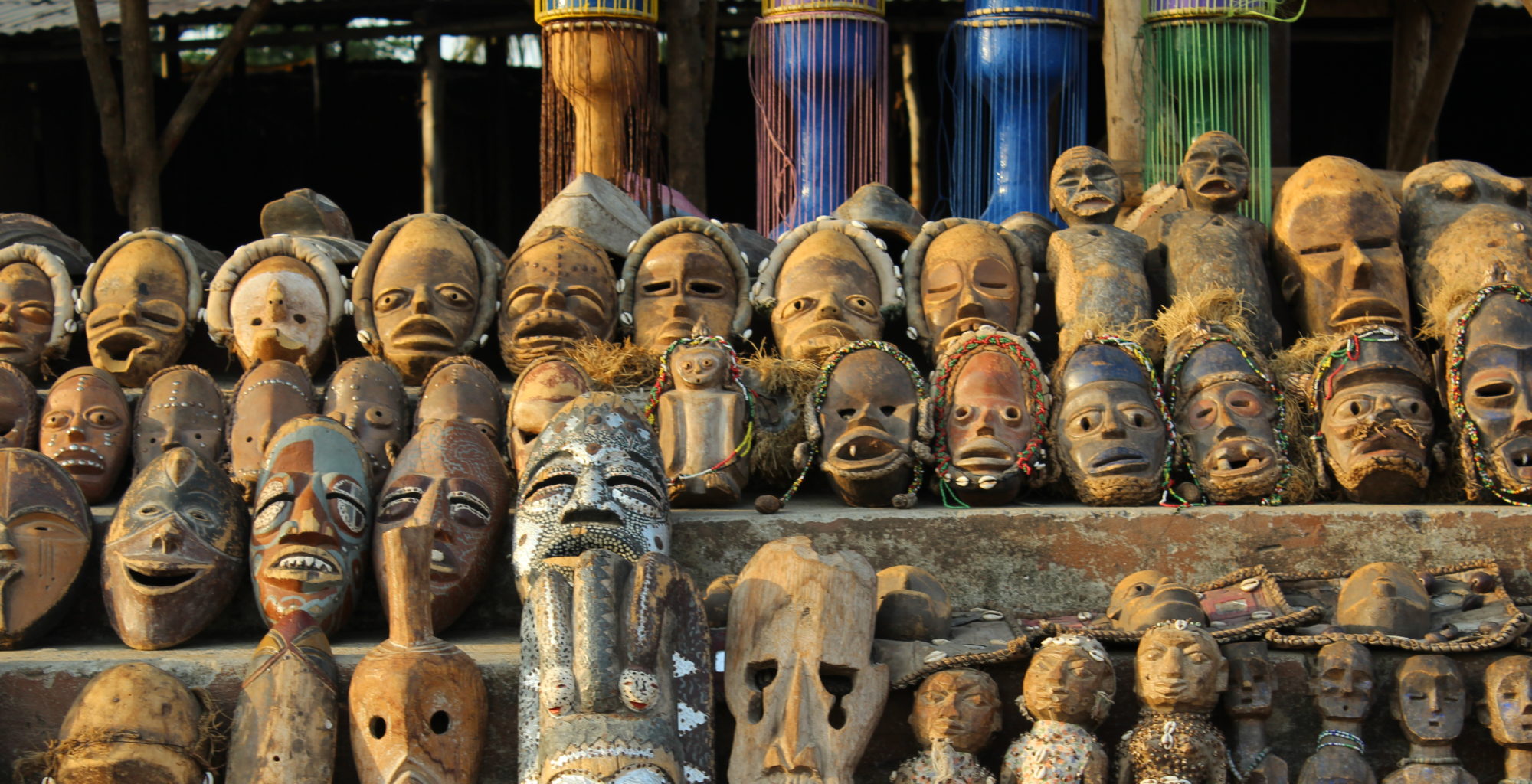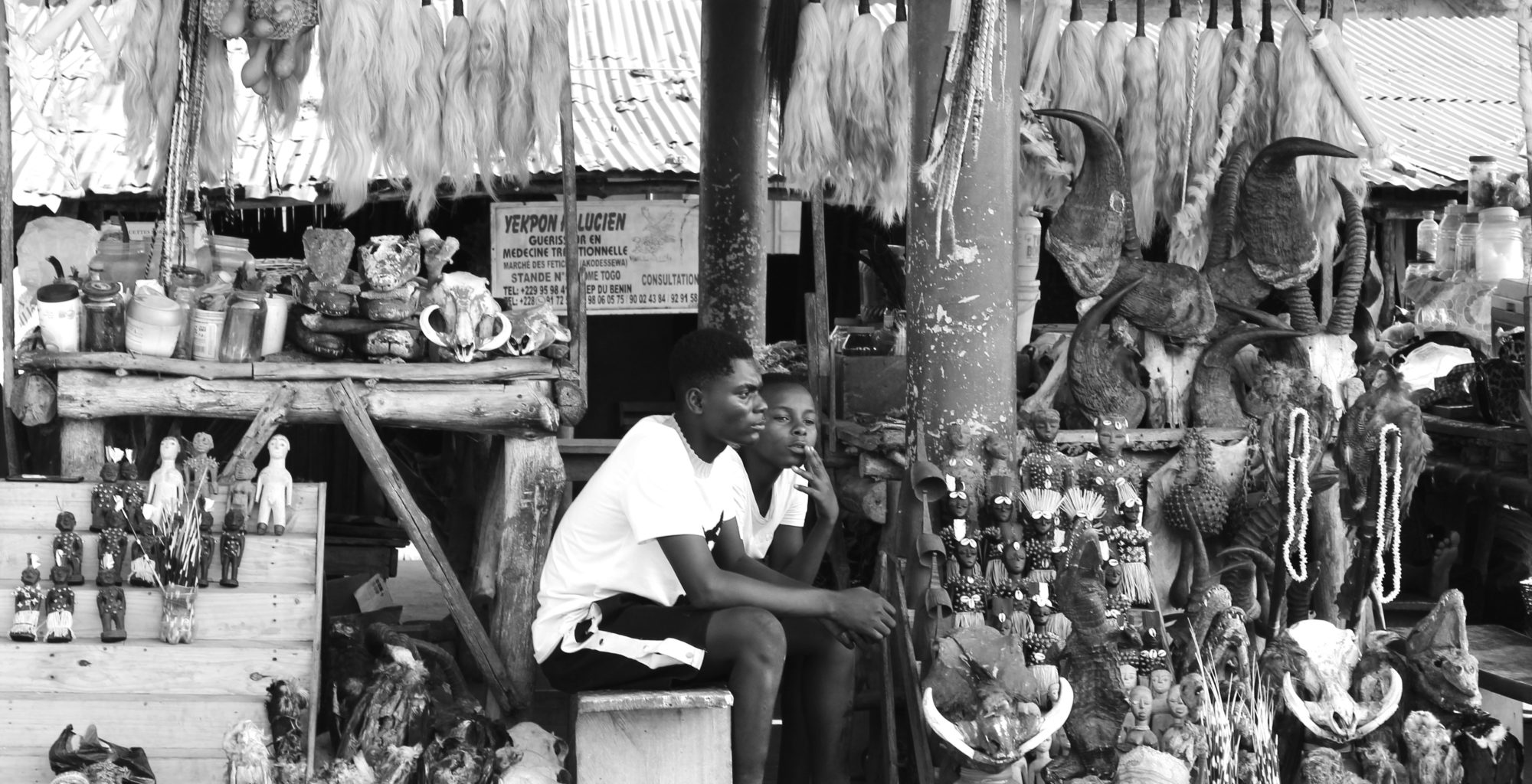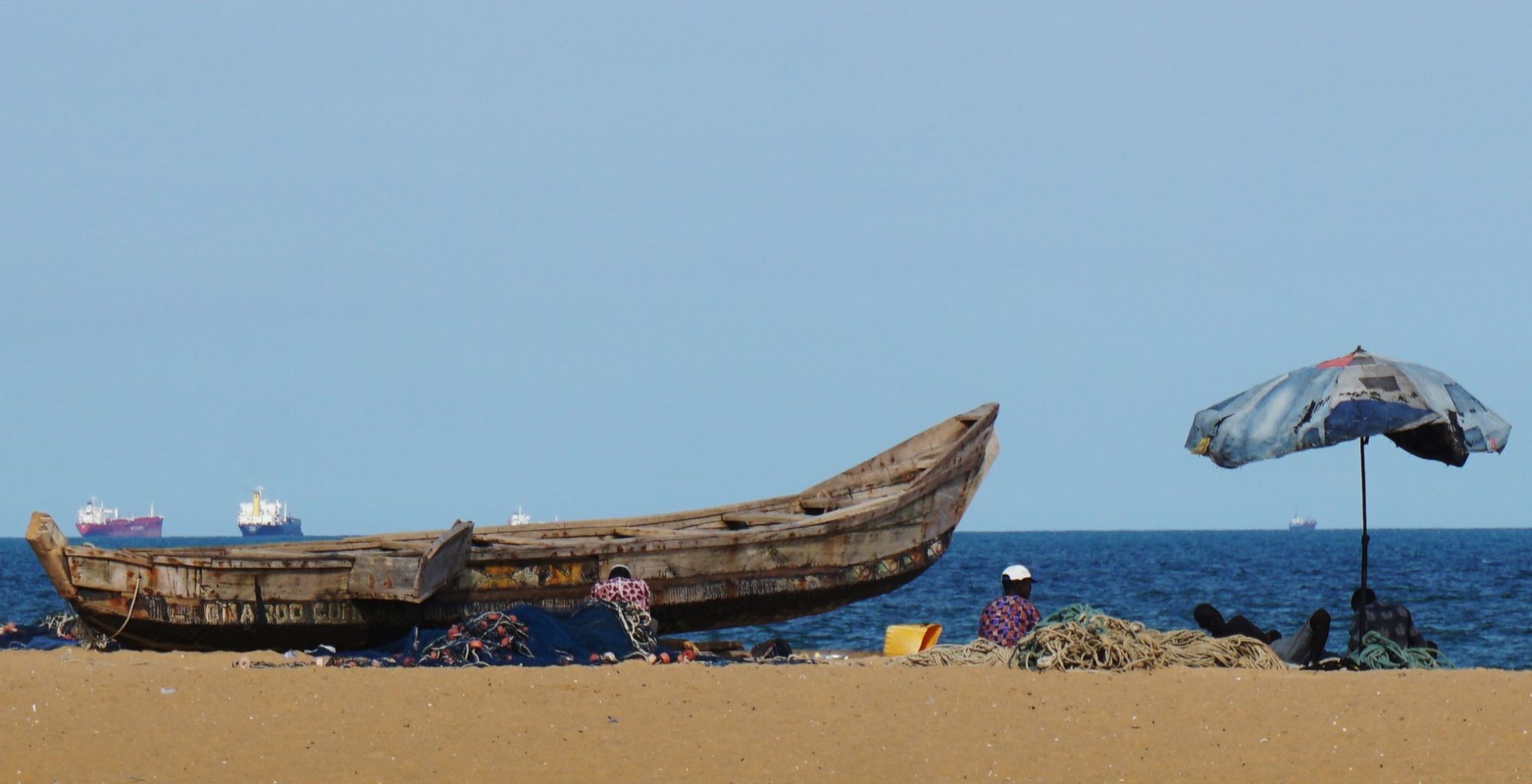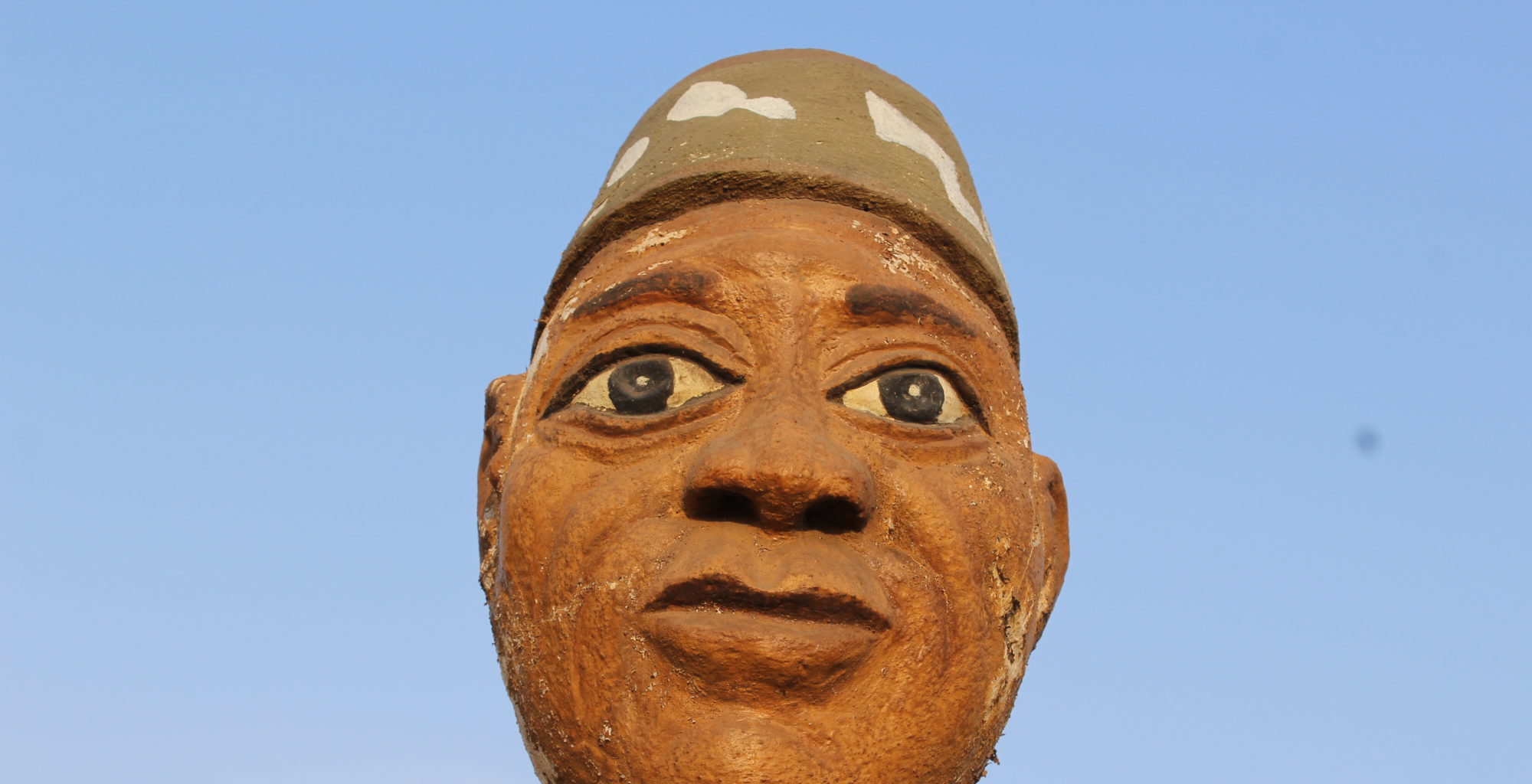Togo’s capital, Lomé, is located on the coast in the south of the country, close to the border with Ghana to its west. Home to approximately 1.8 million people, the city is a pleasing mix of contradictions, at once dishevelled and go-getting. Its shoreline is home to both palm-fringed sandy beaches and a major industrial port. Large modernist monuments in spacious manicured grounds sit cheek by jowl with markets and bustling streets, the patchwork of styles knitting together seamlessly, an effect that reflects and encapsulates the story of Togo itself.
Local tradition has it that the site now occupied by the city was founded by a hunter named Dzitri, who settled in a forest known as Alo in the local Ewe language. Alomé, by extension, translates as ‘amongst the Alo trees’, hence the capital’s name. The story of Dzitri is likely only legend, but the area was indeed first inhabited by the Ewe, who used the site as a trading post from the late 1700s onwards. It is an uncomfortable truth that various African tribal groups, including some Ewe communities, actively traded slaves with Europeans, and this is indeed part of Lomé’s origin story. The Ewe of today bear this history heavily and have taken great steps to acknowledge their ancestors’ roles during this dark period.
By 1897, Lomé was commercially significant enough for the newly formed German Protectorate of Togoland to make the city its capital. Two of Germany’s lasting legacies in the city are the striking neo-Gothic Sacré-Cœur Cathedral and the Palace of Governors. The latter is now named the Palace of Lomé. This recently restored grand house and its 11 hectares of gardens are arguably now Lomé’s most impressive cultural hub, with a gourmet restaurant, art gallery, boutique bookshop, and regular live performances of dance, theatre and music.
Lomé continued to prosper throughout French colonial rule, buoyed by an increasingly influential elite of Ewe merchants. By the time independence came in 1960, Lomé was the natural choice as the new nation’s capital. It was in this period that much of the city’s modernist architecture appeared, reflecting the confident ambitions of a young country looking towards a bright future. Built at the advent of the 1960s, the monolithic Monument of Independence epitomises both this new hope and the city’s flair for modernist architecture.
Optimism was short-lived, however, as political turmoil soon gripped the country, which resulted in the repressive one-party rule of President Gnassingbé Eyadéma. When Eyadéma died in 2005, the military moved swiftly to secure the presidency for his son, Faure Gnassingbé. Large-scale protests erupted across the country, with Lomé seeing some of the most intense demonstrations. Civilians and national security forces clashed on multiple occasions across the city. The African Union and other international institutions stepped in to help resolve the crisis, resulting in democratic elections which were ultimately won by Gnassingbé. Controversial though the outcome was, peace was restored across the country and Lomé found itself with a new landmark: Place de la Colombe de la Paix (the Dove of Peace Square) to mark the return of political stability.
Peace continues to reign, and today Lomé is a small but vibrant capital, home to Togo’s National Museum and the International Museum of the Gulf of Guinea. Other important sites include the kaleidoscopic Grand Market and of course, the unmissable Vodun Fetish Market of Akodessewa, where objects from the natural world, known as fetishes, are sold for their assumed medicinal and magical purposes.
For accommodation in Lomé, see below.
